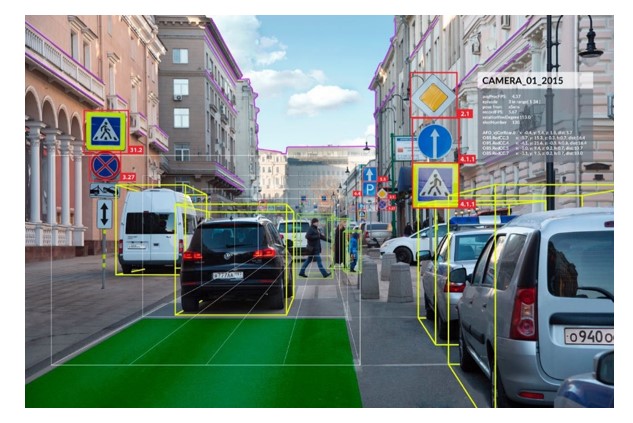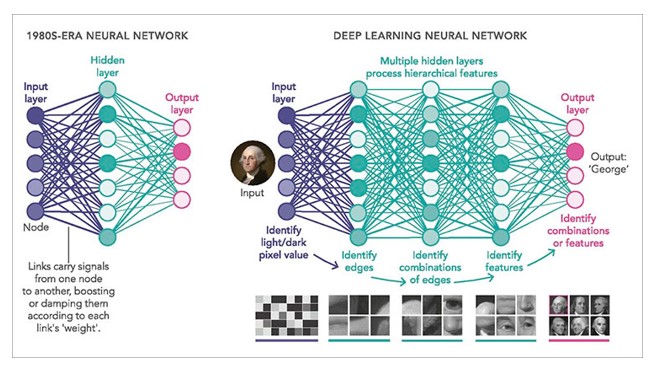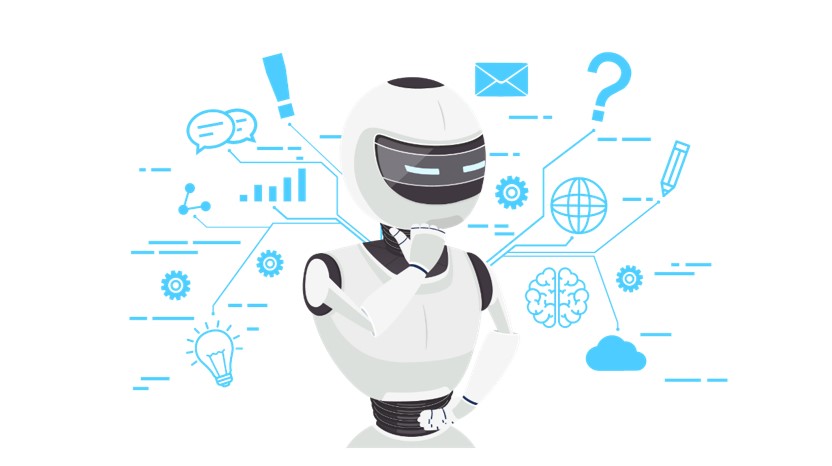Center for Artificial Intelligence and Deep Learning
"Research is to see what everybody else has seen, and to think what nobody else has thought"
About
The AIDC is made up of three Computer Science Engineering professors and their undergraduate students. It was founded in 2022 as a result of a series of weekly meetings in which researchers discussed current research topics such as natural language processing, vision models, pattern recognition, image and speech processing. The AIDC's mission is to better understand visual processes and find solutions to problems in visual perception and processing. In this lab, students will learn the fundamental principles and tools for processing images and videos, as well as how to apply them to real-world commercial and scientific problems.
The goal of the AIDC is to develop comprehensive image processing and text understanding techniques that can be used in various applications such as quantitative analysis, medical imaging, gaming, and visualizations. More recently, we are extending our research interests by employing text, speech, and vision processing techniques to develop various real-time applications. AIDC is a research facility in the Computer Science and Engineering (AI&ML) Department in Institute of Aeronautical Engineering (IARE) dedicated to cutting edge research in Text, Speech and Vision Processing applications.
The primary functions of the AIDC are to
- Develop a stable understanding of modern text, speech, and vision processing investigations between theoretical background and practical implementations.
- From the perspective of mathematical image analysis, learn about the problems and issues connected with computer vision applications analysis algorithms and techniques.
- Implementation of a wide variety of computer vision techniques is well-versed with a focus on their utility.
- Encourage experimental learning
- Provide an excellent research environment and assist the strong interdisciplinary collaborations and the dissemination of knowledge.
- Encourage active and mutually beneficial R&D collaborations between industries.
Key features of the space include
Artificial Intelligence and Machine Learning - The students are facilitated to develop data centric solutions for model management and deployment on real time data in completing their mini/major projects.
Text Processing - Students are encouraged to use text processing techniques to perform tasks such as sentiment analysis, auto-correct of grammar, language translation, spam filtering, information retrieval, automated answer generation etc. The students can utilize some text processing tools like Natural Language Toolkit, scikit-learn and BeautifulSoup libraries to complete their academic projects.
Speech Processing - The students can able to learn how the speech recognition technology allow computers to take audio, interpret and generate relevant text from it. The students can also get benefitted during their final projects by understanding how speech acts as a natural interface that won’t run on a computer which are becoming more common in people’s life in many ways like talking to robots, controlling digital equipment, enabling hand-free environment, aiding the visually impaired.
Computer Vision - The students can able to learn how to implement various applications like self-driving vehicles, image processing and analysis, replication of human visual system, digital transformation, video analytics, thermal imaging analysis, edge computing, auto- annotation and training.
Deep Learning - Through deep learning, students develop the necessary skills to think critically and communicate effectively with machines. They also learn to self-direct their education by deeply understanding the real-time problems and develop curiosity and fulfill their goals.
Augmented Reality / Virtual Reality - it is a space that aims to explore the latest in virtual and augmented reality. It features a variety of tools and technologies that allow students to create and experiment with cutting-edge immersive experiences.
Major focus area
Major research in AIDC is focused on
Artificial Intelligence
Artificial intelligence (AI) systems are essentially advanced software that can be used to perform various tasks and functions based on their own preferences. While they aren't getting smarter, they are improving their capabilities and are more useful to people and making life smarter. Examples: Siri and Alexa, an AI-based applications help in providing information, remembering the events, scheduling appointments and many more by understanding human languages. Tesla, a self-driving car gaining its importance because of its self-driving features and predictive capabilities. Cogito, a behavioural adopter that tries to improve the emotional intelligence of customer support.
AIDC is focusing on innovating technologies that improve how AI systems act with and among people. As examples: facial emotion detection, predictive systems through CV analysis, disease predictions, chatbots, AI-powered assistants, language translation using deep learning, spam filters, recommendation systems, automatic road and traffic detection using CNN and GNN, predicting human behaviour, disease detection and classification, vehicle control systems, fraud news detection and others.
Computer Vision
The rise of computer vision has been one of the most significant developments in AI research and development over the past decade. Its increasing maturity is allowing scientists to develop new approaches to intelligence in fields such as artificial intelligence and robotic systems. Due to the increasing amount of visual information being stored and produced by humans, computers have been struggling to understand it all. For instance, they can't make sense of the thousands of photos and videos that are captured by surveillance cameras. In addition, capturing the series of numbers in a digital photograph doesn't allow computers to understand the meaning of the image. Humans are capable of perceiving information through their eyes, but computers are not. With the help of computer vision, researchers can teach systems how to see. Through the processing of individual pixels, computers can create concepts. Through the development of neural networks, computer vision has been transformed into a science that allows children to identify objects using images from the Internet. These networks, which are capable of analyzing 24 million nodes, are designed to train systems on how to see.

In AIDC, the researchers use neural networks to train robots on how to react properly to situations. In addition, students are also developing computer vision systems that can provide them with the expertise they need to perform their jobs. This technology is very important in the development of AI as it allows machines and people to coexist in an intelligent manner.
“Teach Machines to find defects before they affect the whole functioning”
Few examples of computer vison applications are: A automated image classification system can classify an image into various categories such as a dog, an apple, and a person's face. It can also predict which image belongs to which group. For instance, a social media company could use this feature to automatically identify and remove offensive content from its users' posts. Classification systems can also be used to identify objects in an image or video that are not in the original image. For instance, they can identify damages caused by an assembly line and suggests maintenance. Objects that are captured in sequence or in real-time video feeds can be tracked by an object tracking system. This process can be performed by analyzing images taken from various sources. In addition to being able to identify and detect objects, autonomous vehicles also need to be able to monitor the movement of other vehicles and pedestrians. A content-based image retrieval system uses computer vision to analyze and search images from large data stores. Unlike metadata tags, this method uses the content of the images to determine its classification. This method can be used to replace manual image tagging. It can also improve the accuracy of image search and retrieval by replacing the need for manual entries.
Deep Learning
Deep Learning is a key sub-discipline in the field of artificial intelligence and machine learning that's transforming various tasks previously handled by humans. For instance, speech recognition was previously performed by algorithms developed by skilled human programmers. In the past, computers were required to perform speech recognition by analyzing the patterns in digitized audio files. However, in the last five years, the field has become more practical to build deep neural networks. Deep learning is built on the idea that there are lots of data that can be analyzed. By learning from this data, a computer can then perform various tasks such as identifying and understanding it. The abundance of data collected through various sources such as videos, photos, and transcripts provide computers with a rich library of information.

With deep learning, computers no longer need to develop complex algorithms to analyze and interpret the vast amount of data. The advantages of deep learning are its ability to perform simple tasks and its speed. With the right amount of computing resources, computers can learn quickly.
The importance of deep learning is acknowledged as it can help improve the efficiency of daily lives by allowing people to make their lives more convenient. However, it is also linked to the fact that the world is constantly producing more knowledge, which requires a large amount of knowledge to be efficiently structured. Through deep learning, all the data collected is then used to develop models that can perform accurate results.
"Deep learning is the ability to learn descriptors of data without human intervention"
Deep learning is a process that involves creating a model and training it to perform in a safe environment. A million sets of data are fed into the system to build a model. Developers of autonomous cars are constantly testing and implementing deep learning algorithms in order to ensure that they can handle unprecedented scenarios. This process involves exposing their systems to millions of scenarios. Through the data collected by sensors, cameras, and geo- mapping, deep learning can create models that can navigate through traffic and identify various pedestrian-only routes. One of the most critical tools that businesses can use to combat fraud is news detection, as it can help them distinguish between fake and genuine reports. It’s very hard to detect fake news as bots can easily replicate it across different platforms. With deep learning, it can also help remove biased or fake news from your feed. It can also warn you about possible privacy breaches. Deep learning is also trying to improve the natural language processing capabilities of its models by training them to recognize and interpret different linguistic nuances.
Lab Highlights
Text Processing, Speech Processing, and Computer Vision Applications
Equipment / Software
Open-Source Resources
Open-Source Environments: Google Cloud Machine Learning Engine, Azure Machine Learning Studio, TensorFlow, H2O AI, IBM Watson, Salesforce Einstein, and Infosys Nia.
Cloud Environments: Natural Language Toolkit (NLTK), SpaCy, TextBlob, Textacy, Pytorch-NLP, Retext, Compromise, Natural, and Nlp.js, OpenNLP, Stanford NLP, and CogCompNLP.
Speech Recognition Tools:Apiai, Google-Cloud-Speech, Speech Recognition, and Watson-Developer Cloud.
Computer Vision Tools:OpenCV, Viso Suite, TensorFlow, CUDA (GPU Specific), Keras, SimpleCV, BoofCV, CAFFE, Open VINO, DeepFace, YOLO.
Image Processing Tools:OpenCV, TensorFlow, PyTorch, Caffe, EmguCV, VXL, GDAL, MIScnn, Tracking, WebGazar, Marvin, and Kornia.
Ready-made Solutions:MobileNet, Fritz, Computer Vision Annotation Tools, 3D-BoNET, Reasoning RCNN, STEAL, VQ-VAE-2, EDVR, CorrFlow, FUNIT, Speech2Face, Mesh RNN, DeepView, DSNet, PIFu,
All the environments and tools are used on both CPU and GPU-enabled machines.
| S No |
Description |
Quantity |
| 1 |
1U dual socket Server Solution - 4th generation 6430
- Ubuntu 18.04, Intel oneAPI Base Toolkit
- Intel AI Analytics Toolki
- Horovod + Intel MPI
- Intel Extension for PyTorch (IPEX)
- Intel Distribution of OpenVINOTM Toolkit
|
1 |
| 2 |
Storage Server 4th generation Intel Xeon 4410Y |
1 |
| 3 |
16-Port unmanaged Gigabit Ethernet Switch |
1 |
Contact
Dr. B Padmaja
Professor of Artificial Intelligence and Machine Learning
Email: b.padmaja@iare.ac.in
Phone: 9618150625



